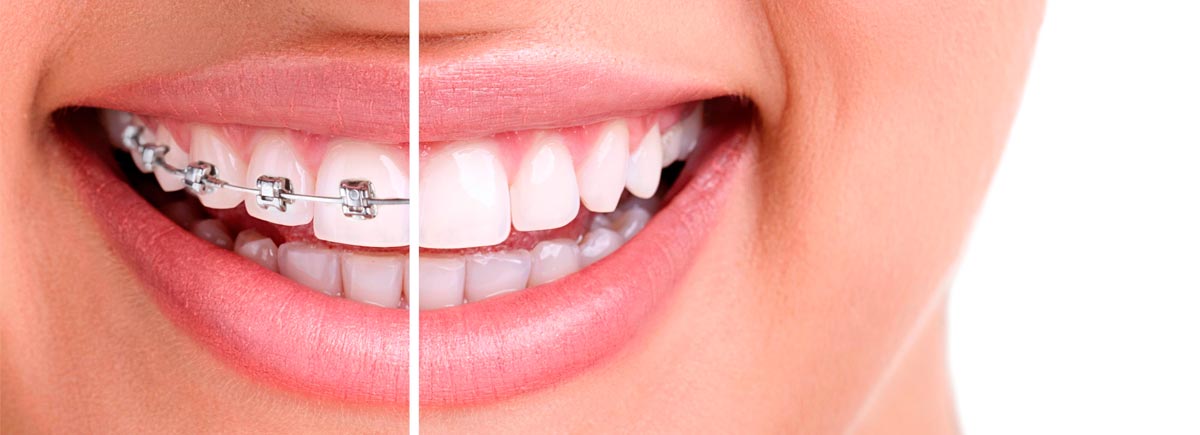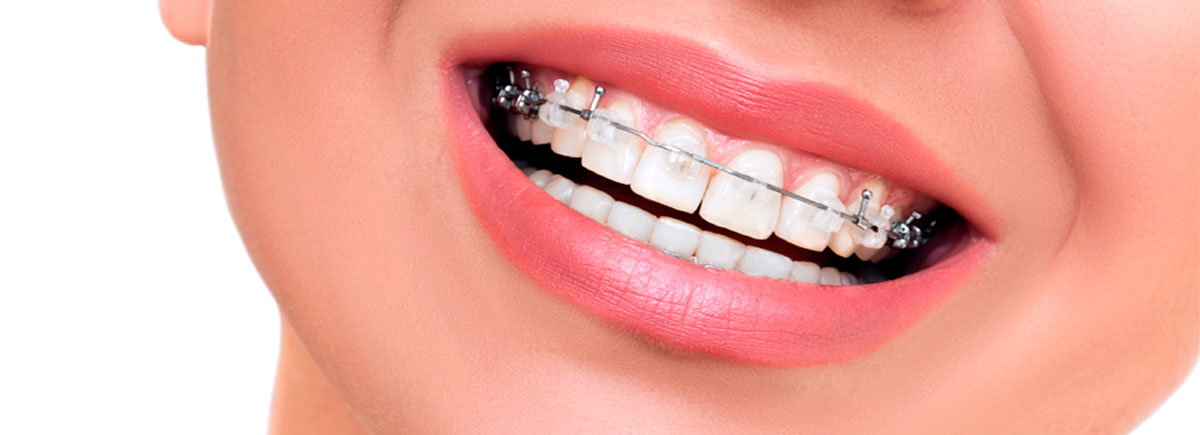Types of Braces:
Metal braces / Traditional braces
The most common braces are the familiar metal brackets that an orthodontist bonds to the front of your teeth. Bands completely wrap around your teeth, while much less noticeable lingual braces bond to the backs of your teeth. All of these metal braces rely on wires for tightening and straightening.
While metal braces fuse to your teeth, you can also get plastic braces that are less permanent. These transparent braces generally come in a tray format and fit around all of your upper or lower teeth. Instead of using wires to make your teeth straighter, your orthodontist fashions a newly aligned tray every few weeks.
Self-ligating braces
Historically, the only choice in wearing braces was the conventional, bulky type requiring tightening every few weeks and lots of appointments when bands would break. Today, while traditional appliances are still available there are other options for you to choose from. Both traditional and self-ligation (Damon) braces achieve the same basic results, but the self-ligation style is typically easier to tolerate. The differences include:
Looks
The traditional style of braces use clunkier materials that are more obvious on the teeth. There is also the need for elastic bands. With self-ligation braces, elastic bands are eliminated and the braces are less obvious in their appearance.
How they work
While both styles of orthodontic treatment get the same results, the way those results are achieved is different. Traditional braces uses a process in which you return to the orthodontist every four to six weeks to have them tightened and band repositioned to pull on teeth to move them.
Most people have sore mouth for several days to a week following each tightening appointment throughout the one to three year treatment. self-ligation braces work by using a tiny spring-loaded door to maintain pressure on the archwires. This process applies pressure to the system to gently adjust the teeth to the desired position. Because of the new technology used in self-ligation braces, the need for tightening is eliminated.
Esthetic Braces
If you want straighter teeth but are concerned about how you’ll look with braces, consider this; many cosmetically minded celebrities are wearing esthetic braces to improve their smiles quickly without compromising their signature look. In fact, when Tom Cruise graced the cover of Entertainment Weekly in 2002 he was wearing clear braces.
How Do Esthetic Braces Work?
Esthetic braces work the same way as metal braces. The only difference is that crystal-clear brackets are used instead of metal ones. They are a great alternative for patients who want a more esthetic alternative to metal braces and are not a candidate for clear aligners, such as Simpli5 or Invisalign.
Why do people get braces?
A dentist usually recommends braces to improve a patient’s “orofacial” appearance. Through orthodontic treatment, problems like crooked or crowded teeth, overbites or underbites, incorrect jaw position and disorders of the jaw joints are corrected. If left untreated, these problems can result in tooth decay, gum disease, headaches and earaches, as well as speaking, biting or chewing problems.
Which is the ideal age for orthodontics?
Kids and teenagers are by far the most common patients to receive braces, but that age commonality doesn’t mean adults can’t benefit from this orthodontic treatment, too. In fact, about 20 percent of patients undergoing braces are older than age 18.
Many adult patients choose to pursue a straighter smile after missing out on the opportunity to get braces as children. Others had braces as kids but have had shifting teeth as adults. Still others have never experienced crooked or overcrowded teeth but need help correcting structural or skeletal issues later in life. Whatever the reason, braces can benefit adult patients as much as children.
When is the best time to begin orthodontics (braces)?
Though an orthodontist can enhance your smile at any age, there is an optimal time to begin treatment. The American Association of Orthodontists recommends that the initial orthodontic evaluation occur at the first sign of orthodontic problems or no later than age 7.
At this age, orthodontic treatment may not be necessary, but an examination can help anticipate the most advantageous time to begin treatment.
An early evaluation provides both timely detection of problems and a greater opportunity for more effective treatment. Prudent intervention helps redirect growth and development, preventing serious skeletal problems later. When early orthodontic intervention is not necessary, an orthodontist can carefully monitor growth and development and begin treatment when it is the ideal time.
Braces aren’t just for kids. More and more adults are also wearing braces to correct minor problems and to improve their smiles.






